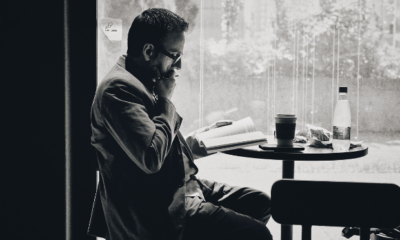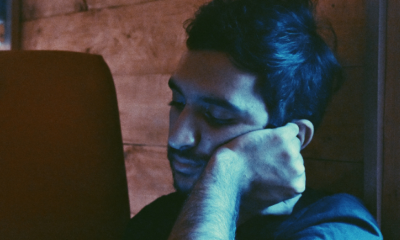Life
5 Strategies to Help You Make Winning Decisions

Have you regretted any of the decisions that you’ve made? I’ll take a wild guess here and say “yes.” We all have walked in Remorse-land many times and have made mistakes we would gladly erase if given the chance. So then, if someone comes to you and offers you a time machine to go back and alter some of your not-so-bright choices, you would take it, right?
Of course, this all makes for an enticing plot of a Hollywood blockbuster, but in reality, such kind of magic doesn’t exist. How about then if you are given the next best alternative, the tools to make better decisions from the outset, rather than living with regrets and wishing to have the power to bend time?
Here are five strategies which will help you become better at picking the winning option:
1. See the future you
In his widely-popular research, Hal Hershfield, a UCLA associate professor who has studied for years how people can make better long-term decisions, asked participants to envision themselves in 10 years. fMRIs detecting brain activity showed that we think about our older selves the same way we do about complete strangers.
But when part-takers were shown computer-altered pictures of themselves looking near retirements age, things changed— they allocated twice as much money to their retirement fund vs. buying something new today.
The rather salient takeaway here is that, to make better decisions, we must imagine how they will impact our future selves. If you believe a choice will help you get you closer to the future happy and successful you, then, by all means, take it. But if you are unsure, better have another think.
2. Expand your pool of options
An excellent piece in the NYTimes describes a study by Paul Nutt—a Professor of Management at Ohio State University, who, in the early 1980s carried out a study among senior managers at public and private companies in the U.S. and Canada on how they made decisions. He found out that half of the decisions in companies failed because people tended to take shortcuts and didn’t spend sufficient time looking for alternatives and evaluating them (only 29% did so).
And this can cost us. According to other research, when we ignore assessing other options, our chances for success are about 50 %, while decisions involving at least 2 choices lead to a favorable outcome in 2 out of 3 cases.
To come up with some quality ideas, in addition to expanding the size of our canvas, we should involve other people in our brainstorming endeavor, draft a list of the choices and assign weights to each. The highest score wins.
These approaches will enhance our decision-making skills, which, in turn, will give us a shot at something much bigger; a chance to reach our goals, be happier and have a more fulfilling future.
“Panic causes tunnel vision. Calm acceptance of danger allows us to more easily assess the situation and see the options.” – Simon Sinek
3. Limit your pool of information
Yes, this idea goes directly against the above point and sounds counterintuitive, but if you get to think about it—it does make sense. Studies from Princeton and Stanford Universities, have revealed that when we immerse ourselves in a sea of information, we may end up pursuing non-instrumental data, which we then use to make decisions.
Naturally, the quality of that outcome will be questionable. Sometimes, we may end up with a choice that we wouldn’t have made altogether (and possibly regret it later on) if we didn’t rely on this irrelevant information.
How do we end up in such a position? It’s driven by our aversion to uncertainty. Simply put, our brains hate volatility and try to resolve it any way they can. One way is by seeking any information that seems like a good candidate and hastily pick it.
Phew, problem solved! Move on. But, as research tells us, seeking out more details do help make a decision, but it may not necessarily be a good one.
4. Take a page from Darwin and Franklin
When Malcolm Gladwell published his book Blink: The Power of Thinking Without Thinking in 2005, the world was fascinated by the idea that we can make complex decisions with very little effort—just by trusting our gut instinct and by ‘snapping it.’ That is, the book offers some research to support the idea that quick solutions based on intuition can yield surprisingly successful outcomes.
Sounds great but many subsequent studies don’t quite support this. What’s more, sticking to the “old school” ways of making decisions such as conscious thinking and evaluation of alternatives, can lead to more high-quality results.
Just take a note from Darwin who used the pros-and-cons list to make the most important decision of his life—whether to marry. Ben Franklin, similarly, always used this same “simple” method when confronted with challenging choices. Sometimes, the conventional non-fancy ways to make decisions happen to be the best options.
“Warren Buffett told me once and he said always follow your gut. When you have that gut feeling you have to go with, don’t go back on it.” – LeBron James
5. Kill the Company
“Kill the Company” is a best-selling book by Lisa Bodell—the CEO of a consulting company which helps businesses embrace change and innovation. The basic premise of the exercise is that executives are asked to brainstorm all of the ways in which their company can go down. Then, packed with this insight, they work backwards to try and remedy the loopholes in their processes, strategies and choices.
The idea has proven very effective and easy to practice. Just imagine that a decision you pick today turns out to be a complete failure in the future. What will you do to ensure a better outcome?
In the end, our decisions are the foundations of the future lives we build for ourselves, as they have the power to directly affect our success trajectories. While taking the wrong turn may not always have catastrophic consequences, we are also rarely given a do-over in life.
And why is it so vital that we keep honing our choice-making skills, you may ask? It’s very simple—YOLO.
Which one of these strategies to make winning decisions resonated most with you and why?
Life
10 Research-Backed Steps to Create Real Change This New Year
This New Year could finally be the one where you break old patterns and create real, lasting change.

Every New Year, we make plans and set goals, but often repeat old patterns. (more…)
Life
9 Harsh Truths Every Young Man Must Face to Succeed in the Modern World
Before chasing success, every young man needs to face these 9 brutal realities shaping masculinity in the modern world.

Many young men today quietly battle depression, loneliness, and a sense of confusion about who they’re meant to be.
Some blame the lack of deep friendships or romantic relationships. Others feel lost in a digital world that often labels traditional masculinity as “toxic.”
But the truth is this: becoming a man in the modern age takes more than just surviving. It takes resilience, direction, and a willingness to grow even when no one’s watching.
Success doesn’t arrive by accident or luck. It’s built on discipline, sacrifice, and consistency.
Here are 9 harsh truths every young man should know if he wants to thrive, not just survive, in the digital age.
1. Never Use Your Illness as an Excuse
As Dr. Jordan B. Peterson often says, successful people don’t complain; they act.
Your illness, hardship, or struggle shouldn’t define your limits; it should define your motivation. Rest when you must, but always get back up and keep building your dreams. Motivation doesn’t appear magically. It comes after you take action.
Here are five key lessons I’ve learned from Dr. Peterson:
-
Learn to write clearly; clarity of thought makes you dangerous.
-
Read quality literature in your free time.
-
Nurture a strong relationship with your family.
-
Share your ideas publicly; your voice matters.
-
Become a “monster”, powerful, but disciplined enough to control it.
The best leaders and thinkers are grounded. They welcome criticism, adapt quickly, and keep moving forward no matter what.
2. You Can’t Please Everyone And That’s Okay
You don’t need a crowd of people to feel fulfilled. You need a few friends who genuinely accept you for who you are.
If your circle doesn’t bring out your best, it’s okay to walk away. Solitude can be a powerful teacher. It gives you space to understand what you truly want from life. Remember, successful men aren’t people-pleasers; they’re purpose-driven.
3. You Can Control the Process, Not the Outcome
Especially in creative work, writing, business, or content creation, you control effort, not results.
You might publish two articles a day, but you can’t dictate which one will go viral. Focus on mastery, not metrics. Many great writers toiled for years in obscurity before anyone noticed them. Rejection, criticism, and indifference are all part of the path.
The best creators focus on storytelling, not applause.
4. Rejection Is Never Personal
Rejection doesn’t mean you’re unworthy. It simply means your offer, idea, or timing didn’t align.
Every successful person has faced rejection repeatedly. What separates them is persistence and perspective. They see rejection as feedback, not failure. The faster you learn that truth, the faster you’ll grow.
5. Women Value Comfort and Security
Understanding women requires maturity and empathy.
Through books, lectures, and personal growth, I’ve learned that most women desire a man who is grounded, intelligent, confident, emotionally stable, and consistent. Some want humor, others intellect, but nearly all want to feel safe and supported.
Instead of chasing attention, work on self-improvement. Build competence and confidence, and the rest will follow naturally.
6. There’s No Such Thing as Failure, Only Lessons
A powerful lesson from Neuro-Linguistic Programming: failure only exists when you stop trying.
Every mistake brings data. Every setback builds wisdom. The most successful men aren’t fearless. They’ve simply learned to act despite fear.
Be proud of your scars. They’re proof you were brave enough to try.
7. Public Speaking Is an Art Form
Public speaking is one of the most valuable and underrated skills a man can master.
It’s not about perfection; it’s about connection. The best speakers tell stories, inspire confidence, and make people feel seen. They research deeply, speak honestly, and practice relentlessly.
If you can speak well, you can lead, sell, teach, and inspire. Start small, practice at work, in class, or even in front of a mirror, and watch your confidence skyrocket.
8. Teaching Is Leadership in Disguise
Great teachers are not just knowledgeable. They’re brave, compassionate, and disciplined.
Teaching forces you to articulate what you know, and in doing so, you master it at a deeper level. Whether you’re mentoring a peer, leading a team, or sharing insights online, teaching refines your purpose.
Lifelong learners become lifelong leaders.
9. Study Human Nature to Achieve Your Dreams
One of the toughest lessons to accept: most people are self-interested.
That’s not cynicism, it’s human nature. Understanding this helps you navigate relationships, business, and communication more effectively.
Everyone has a darker side, but successful people learn to channel theirs productively into discipline, creativity, and drive.
Psychology isn’t just theory; it’s a toolkit. Learn how people think, act, and decide, and you’ll know how to lead them, influence them, and even understand yourself better.
Final Thoughts
The digital age offers endless opportunities, but only to those who are willing to take responsibility, confront discomfort, and keep improving.
Becoming a man today means embracing the hard truths most avoid.
Because at the end of the day, success isn’t about luck. It’s about who you become when life tests you the most.
Change Your Mindset
The Four Types of Happiness: Which One Are You Living In?
Most people chase success only to find emptiness, this model reveals why true happiness lies somewhere else.

In a world driven by rapid technological growth and constant competition, many people unknowingly trade joy for achievement. (more…)
Change Your Mindset
The Secret Daily Routines Behind History’s Most Brilliant Thinkers
Uncover the daily rituals and hidden habits that powered history’s most brilliant minds to success.

Why Daily Rituals Matter
Every great achiever has one thing in common: discipline. Behind the novels, inventions, discoveries, and masterpieces are small, consistent habits repeated daily. (more…)
-

 Personal Development4 weeks ago
Personal Development4 weeks agoThis Silent Habit Might Be Sabotaging Your Career
-

 Business3 weeks ago
Business3 weeks agoWhy Your E-Commerce Fulfilment Is Probably Broken (And How to Fix It)
-

 Shift Your Mindset3 weeks ago
Shift Your Mindset3 weeks ago11 E’s That Define Every Great Leader And Why Most People Miss Them
-

 Did You Know2 weeks ago
Did You Know2 weeks agoThe Success Patterns You Inherited (And Didn’t Notice)
-

 Business3 weeks ago
Business3 weeks agoThe Hidden Money Pit in Your Operations (and How to Use It)
-

 Entrepreneurs2 weeks ago
Entrepreneurs2 weeks agoThe Essential Skills Every Entrepreneur Needs In 2026
-

 Change Your Mindset1 week ago
Change Your Mindset1 week agoHow to Turn Your Mind Into Your Greatest Asset (Instead of Your Enemy)
-

 Change Your Mindset6 days ago
Change Your Mindset6 days agoThe Silent Skill That Makes People Respect You Instantly



























1 Comment